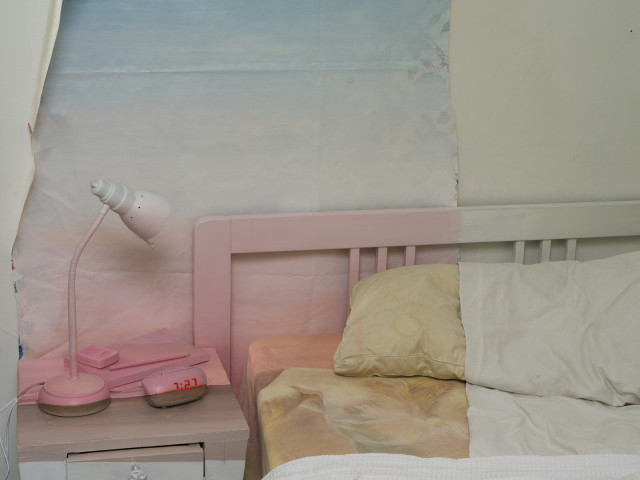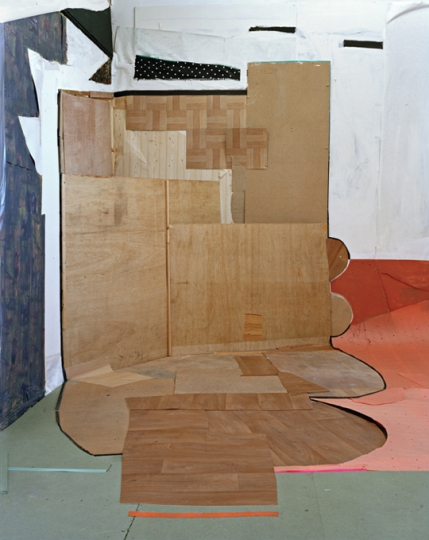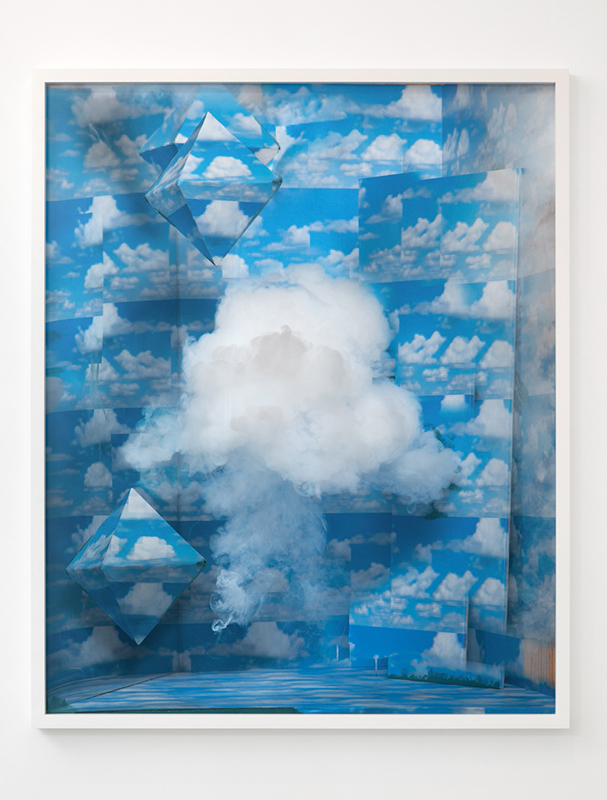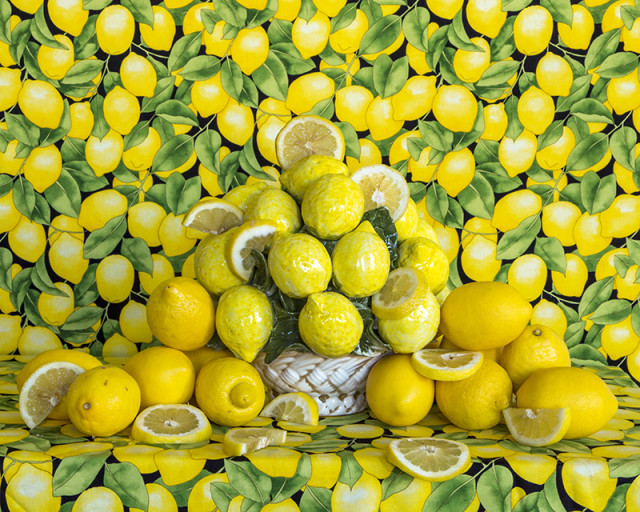
Bryan Zanisnik, “Green Owls Manhattan Bridge”, 30″ x 30″, Photograph, 2015
Bryan Zanisnik‘s “Green Owls Manhattan Bridge” is all illusion. In reality, this apparently flat collage is actually an elaborately constructed set, complete with foregrounds and backgrounds, stools, digitally printed wallpaper and even windows to the outside world. Through July 1, Zanisnik’s studio will be located on the 8th floor of 20 Jay Street in DUMBO, (only a few floors above our office) with a view of the Brooklyn Bridge. The artist waited until sunset to shoot his still lifes, which created that perfect blueprint blue you see in the shots of the bridge above. The set itself was photographed under studio lights.
This approach reminds me a little of Artie Vierkant’s digital manipulations of his exhibition documentation—in both cases, the artist’s statement seems to be that the documentation is the work. But it also seems to be a break from artists in the early aughts whose work relied mostly on various Photoshop filters. Lucas Samaras’s self-portraits and Cory Arcangel’s Photoshop-gradient instruction paintings might be the highest profile examples of such work, but there are plenty more.
Is this new interest in physical illusion a shift away from digital manipulation? Is Brian Zanisnik what Lord of the Rings was to the new Star Wars—a rejection of the green screen in favor of physical sets and real landscapes?
I used this comparison when talking to Zanisnik in the studio, and though his previous work had little to do with digital manipulation, he did think there was some correlation. “When you make thousands of digital storm troopers nothing is impressive anymore.”
As it happens, I’ve seen quite a bit of illusionistic photography recently. These are artists who are making the physical look digital, blending the artificial and the natural, and just generally fucking with spacial perception. A few examples of these artworks below.

Rachel Granofsky, “beans, bed & the body,” 2014
Rachel Granofsky paints onto sets she builds and then photographs them to distort our perception of backgrounds and foregrounds.

Teresa Christiansen, “Ice Mountains”
Teresa Christiansen constructs sets in which actual objects are paired with representations of those objects. Some of these pairings are a little obvious, but the good ones almost seem to vibrate.

Femke Dekkers, “Painted picture 5.”
Pigment print on fiber based paper (wooden frame) 63 x 50 cm 2014
Super elaborate painted sets that are then shot and printed. We’re in the Gregory Crewdson, Thomas Demand, Jeff Wall world here, but in a time when abstraction is more dominant.

Joshua Citarella, “Render and Difference,” 2013, c-print, 70×46 inches, unique
Flickr shots of clouds, printed, with an actual cloud and then photographed.

Jessica Labatte, “Imitators,” 2010, archival inkjet print, frame, 24 x 20 inches
Mirrors have become very popular amongst photographers, but this Labatte image is still a favorite. It’s completely disorienting, and again uses physical materials to create effects that look digital.

Ilaria Ortensi, “Variations,” 2015, color lightjet prints, 72×92 inches.
Ilaria Ortensi also constructs sets to create these luminous photographs that appear to be doctored after in photoshop, but in fact are the result of studio lighting. As it happens, this image will be on view at Judith Charles Gallery tomorrow as part of the show I curated called “Floating Point.”

Rachel Stern, “Still Life with Real and Fake”
Rachel Stern photographs fake lemons, with real lemons and lemon wallpaper. Unlike many of the other photographers, though, Stern isn’t particularly concerned with illusory space. This isn’t trying to be anything more than it is; a still life.


{ 1 comment }
zombie formalism
Comments on this entry are closed.